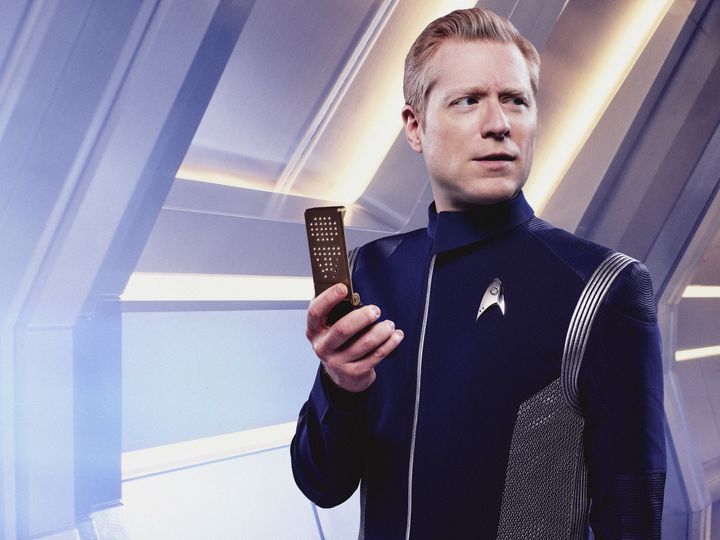Last October I wrote about how Star Trek: Discovery could fit nicely into the “Prime timeline” (the one of the original TV series not the one seen in the movies from 2009 on), and am pleased that Discovery actor Anthony Rapp and Star Trek author David Mack have confirmed this as part of a twitter dialogue. “Yes, Discovery is in the Prime timeline,” wrote Mack. “Apparent ‘discrepancies’ will be addressed/resolved. It works.”
While this certainly matters to the fans, and to Rapp who wrote “Yes it is in the Prime timeline. Yes. Yes. Yes. Yes.”, what will matter most is how good the show will be, and that was the main subject of the twitter dialogue.

Anthony Rapp as Lt. Paul Stamets, a Starfleet officer in Star Trek: Discovery.
“I have had the privilege of being ‘in the loop’ on story development and script distribution of @startrekcbs since day one,” Mack wrote. “Want to know my prediction for what's coming on @starrekcbs? Here it is: THE BEST FIRST SEASON OF A STAR TREK SERIES, =EVER=.”
As longtime Star Trek fans know, the live action shows after the original series took a little while, sometimes years, to really find themselves. While the well-known delays on Discovery have been frustrating, hopefully they have allowed the production to find itself before launch. “There is a more coherent and consistently well-executed vision behind @startrekcbs than Star Trek has ever had before,” Mack wrote attesting to this.
The “discrepancies” fans have noticed most are the different aesthetic of the Starfleet ships and uniforms, and of course the appearance of the Klingons in a series set ten years before the original. The real-world answer to this is audiences today expect much more visually than in the era of the original series, excepting fan films, and CBS has committed to meeting this expectation. I look forward to seeing the official explanation myself when Discovery premiers on CBS and CBS All Access September 24th, but have a few ideas.

There were similar challenges when Star Trek first made the leap to the big screen in 1979 with a story later revealed to occur no more than two years after the original series ended in 1969. The U.S.S. Enterprise had undergone an 18-month re-fit, Starfleet’s uniforms looked totally different (this actually happens a lot), and the Klingons looked really different too. The real-world reason for this is exactly the same as it is for Discovery, but it also goes a long way to providing an “in universe” explanation for Discovery as well.
Starfleet has clearly employed different technologies and designs at the same time, and over relatively short periods of time. The change in the appearance of the Klingons wasn’t addressed until the 30th anniversary episode of Deep Space Nine “Trials and Tribble-ations”, but in a world where we can accept warp drive as a given is it really that hard to believe different members of an alien species can have different appearances.
The bottom line is I have confidence, and have noticed key connections to canon in previews already, but mostly am looking forward to a thoughtful, inspiring story!
